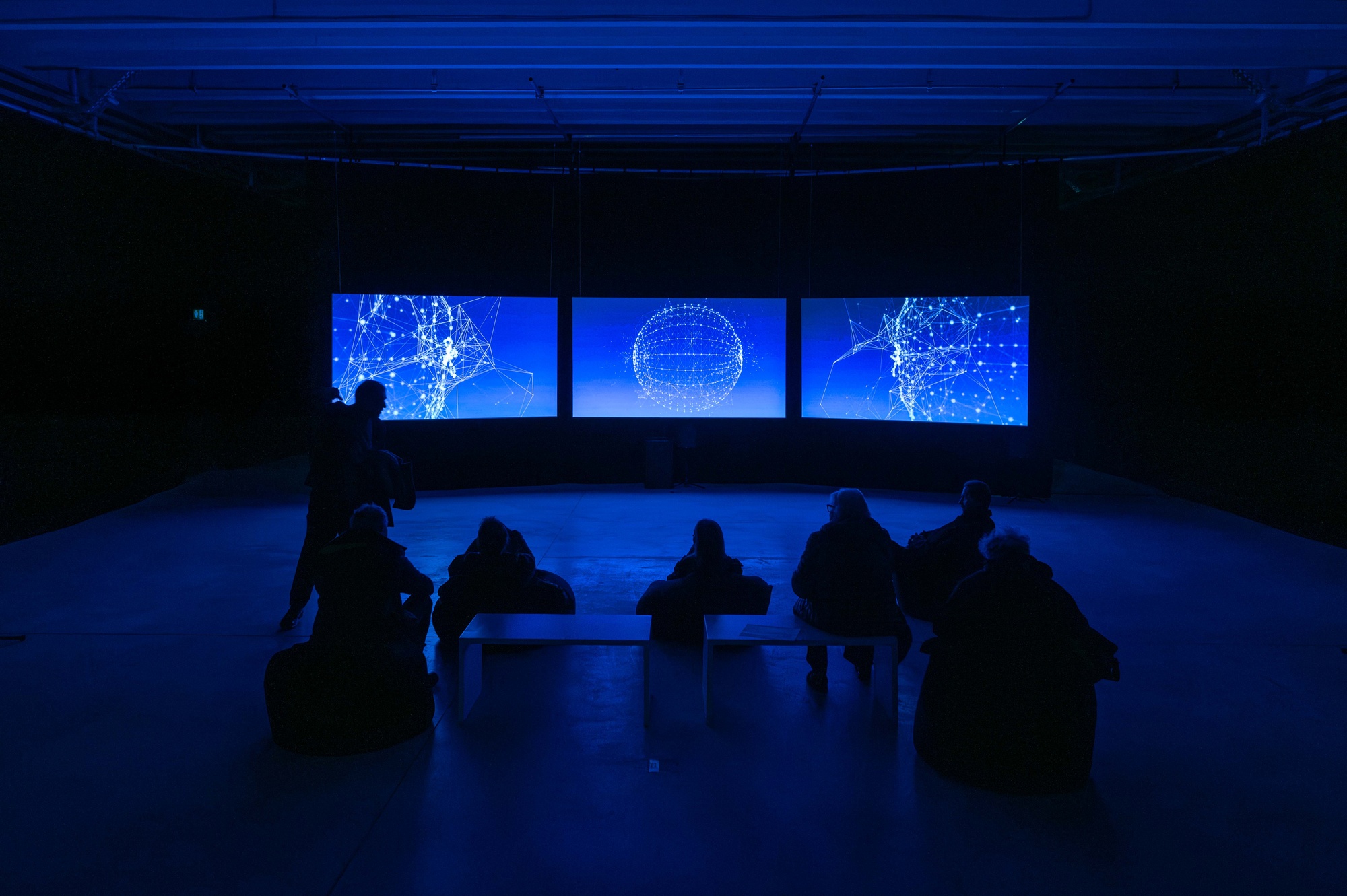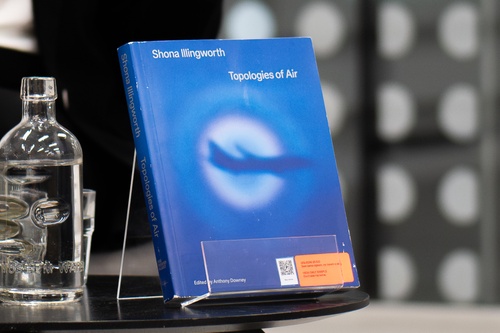Shona Illingworth

Shona Illingworth is a Danish-Scottish artist living in London, UK. Informed by her long-term exploration of memory, cultural erasure, and future imaginaries, her work examines the devastating impact of accelerating military, industrial, and corporate transformations of airspace and outer space, environmental degradation, and their implications for human rights.
Illingworth grew up in the remote Highlands of Scotland on the edge of one of Europe’s largest live bombing ranges. Deeply marked by a long history of cultural erasure, colonial practices, and fear of nuclear annihilation, this highly militarised location is still used by NATO and Allied Forces as a proxy landscape for sites of conflict across the world.
As the artist described: “Tornado GR4 jets would suddenly fly in low to drop live 1000 lb bombs on an island just off the coast and the sky would instantly collapse into an oppressive lid above our heads – the sonic force was visceral – our spatial world contracting with the overpowering military command above.” Shona Illingworth’s video and sound installation Topologies of Air (2021) explores the diverse cultural meanings, cosmologies, and visions of freedom long associated with the sky and examines how airspace and outer space are being rapidly transformed into an ever-more complex, colonised, and instrumentalised space of military and corporate exploitation, increasingly pervasive and weaponised surveillance, nuclear threat, and environmental degradation.
Global in its scope and urgency, Topologies of Air gives voice to multiple and often dissonant perspectives. Transversing invisible layers of the atmosphere through toxic micro-particles of enormous dust storms in the Gulf, the atomic bombing of Hiroshima, large-scale geoengineering proposals for mirrors in space, weaponisation of the electromagnetic spectrum, the rapid proliferation of drones and use of AI in warfare, and the militarisation of outer space, Topologies of Air reveals the rapid transformation of the boundless expansiveness and plurality of the sky and cosmos into a congested, territorialised, and contested space of competing interests and accumulating threats.
The current legal framework concerning airspace and outer space, dating respectively from the 1940s and 1960s–1970s, does not effectively address the escalating threats to which global populations are now subject to. Filmed in different locations around the world, Topologies of Air includes voices from the Airspace Tribunal, an international people’s tribunal that the artist established with human rights lawyer Nick Grief in 2018, and now leads with Renata Salecl, to consider the case for and against a proposed new human right to live without physical or psychological threat from above.
The Airspace Tribunal challenges the traditional state-centric view of how international law is created by bringing together diverse perspectives, knowledges, and experiences from across the world to shape the proposed new human right. Hearings in London, Sydney, Toronto, and Berlin included evidence from experts in human rights, geopolitics, AI, surveillance, neuropsychology, climate change, nuclearism, conflict, and outer space law, and from those who have lived experience of being subjected to aerial violence.
The proposed new human right shall be submitted to the United Nations, the Council of Europe, and other bodies in 2025. The exhibition at Cukrarna includes the article for the proposed new human right itself and Airspace Tribunal #7, a new edition of the artist’s large ongoing body of work, which is closely interconnected with the work of the Airspace Tribunal.
Curated by Renata Salecl, Alenka Trebušak
Text by Shona Illingworth.
Voices (in order of appearance): Ilias Fernini, Kevin Bales, Sebastian Pfautsch, Sophie Dyer, Kirsty Brimelow QC, Carolyn Bonnyman, Abdulaziz Mohammed, Giuse Maggi, Conor Gearty, Anson Mackay, Hiroshi Harada, Luli Van Der Does, Keisuke Imanaka, Majid Rabet, Nick Grief, Lola Young, Steffen Laursen, Steven Freeland, Toral Gajarawala, Mark Sealy, William Merrin, Andrew Hoskins, Davi Kopanawa. Additional text from: Sven Lindqvist, “A History of Bombing,” 2001. Additional music by: Tal Hendrikse, Jeff Knowler, and Azhar Kubba. Archive film: Courtesy the Imperial War Museum, London, NASA, and the European Space Agency. Conceived, filmed, directed, and video and sound edit: Shona Illingworth. Additional sound recording: Philippe Frau-Nadal, Xan M.rquez Caneda, Khalil Ebrahim Ahmed Ali Ajhaddad, Akbar Zaib. Sound mix: Jeff Knowler. Sound design: Tal Hendrikse. Final image grade: Bevis Bowden. Animation: Peter Knight.
Topologies of Air was commissioned and funded by The Wapping Project. The production was supported by Bahrain Authority for Culture and Antiquities, Sharjah Art Foundation, and the British Council, DCMS, and GREAT through the UK-Gulf Exhibition Program, as well Arts Council England and the University of Kent.
The artist would like to thank Doughty Street Chambers; the Ethics Centre, Sydney; the Big Anxiety Festival; the Centre for Peace, Hiroshima University; The Power Plant and Survival International.
Opening hours
Tuesday to Sunday: 10.00–19.00
Tickets
Adults: 3
Students, retirees, visitors with disabilities: 2 €
Family ticket: 8 €
Admission free: children 7 and under, ICOM, PRESS
Press kit
We want to hear from you
The Airspace Tribunal is collecting views and responses on the proposed new human right—the right to live without physical or psychological threat from above. Complete the survey to contribute to our understanding of the sky and contemporary threats from airspace and outer space.
Fill out the survey >> here.
